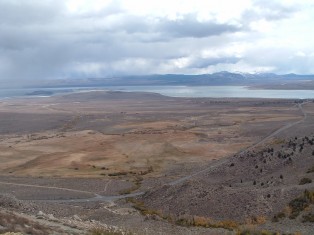American Gold Rush Part 1
The early morning sun gleamed like a bright golden coin above the California foothills. It was January 24, 1848. In all the green wilderness world there was no sign of life except a wisp of smoke from a breakfast fire, and the figure of a man walking beside a ditch that led from a nearly finished sawmill to a river. Suddenly he stopped and stared intently down. James Marshall was a surly man, without friends, and he was a long way from his old him in New Jersey. The other men at Sutter’s Fort thought him a little odd, and stupid. But he was the only millwright in all the California country, and he knew that he was a good mechanic. He looked up at the mill he was building for John Sutter, the German-Swiss owner of this big landed estate, and felt satisfied. The mill was coming along well, the dam was finished and the tail race, or ditch, to let water back into the American River, was dug out. Each night Marshall opened the gate to allow the water to wash as much gravel and sand down the tail race as possible. Then in the early morning he went there to see how it looked. It would not be long before his mill, the first in the new territory, would be sawing lumber to ship down the Sacramento River to the village of San Francisco. James Marshall glanced down again. Something had caught his eye. What was it? He leaned forward. Something glittered a little in the gravel against a stone. “What’s that?” he muttered to himself. He sat on one heel, and picked up the little glittering lump that felt strangely heavy. “Gold! Could it be gold?” The small piece looked more like brass. It was no larger than a tiny dried pea. He rubbed it. It still looked golden. James Marshall stood up and saw his laborers sitting around their fire drinking coffee and eating flapjacks. Beyond them the Indian workers moved quietly, preparing their breakfast of dried deer meat. Marshall walked slowly to the fire where his sober Mormon workers ate silently, and opened his hand. “I found it in the tail race.” The men stopped chewing and one exclaimed, “Fool’s gold,” and laughed. Another spit carefully into a bush several yards away. “ ‘Tain’t nothing but iron pyrite.” he said. “Fool’s gold, that’s all.” James Marshall scowled and clenched his fist over the little pebble. He turned on his heel, and strode up the slope to a small log cabin where smoke was lazily riding from a chimney. As he approached he saw Elizabeth Wimmer, wife of a foreman, standing with a long stick in hand over a big, black soap kettle. Elizabeth Wimmer was one of the few American women in the land so taken from Mexico. She had refused to be left at Sutter’s Fort when Peter, her husband, went to take charge of the Indian laborers building the sawmill. As Marshall came up to her he growled, “Look here, Mrs. Wimmer! This looks like gold. The men say it’s iron pyrite.” He unclenched his fist. Mrs. Wimmer leaned forward curiously. Then, before he could stop her, she picked up the little piece and dropped it into the bubbling soap kettle. “We’ll soon find out, Mr. Marshall. If it isn’t gold the lye in this kettle will eat it up quick. James Marshal said nothing, but turned and went back to the breakfast he had not yet eaten. That night as he went to the cabin where he lived with the Wimmers he felt confident again. The mill would work well with the tail race deepened. He was thinking of the lumber they would soon be sawing and of the money they could get from it in the sleepy village of San Francisco. As he sat and smoked his pipe he was startled by Mrs. Wimmer. Through the door she marched, and up to the scrubbed pine table. “There!” she cried triumphantly. “It’s gold, all right, Mr. Marshall!” Mrs. Wimmer’s cry of gold is said to have been heard around the world. It was a cry that started the great California Gold Rush.


